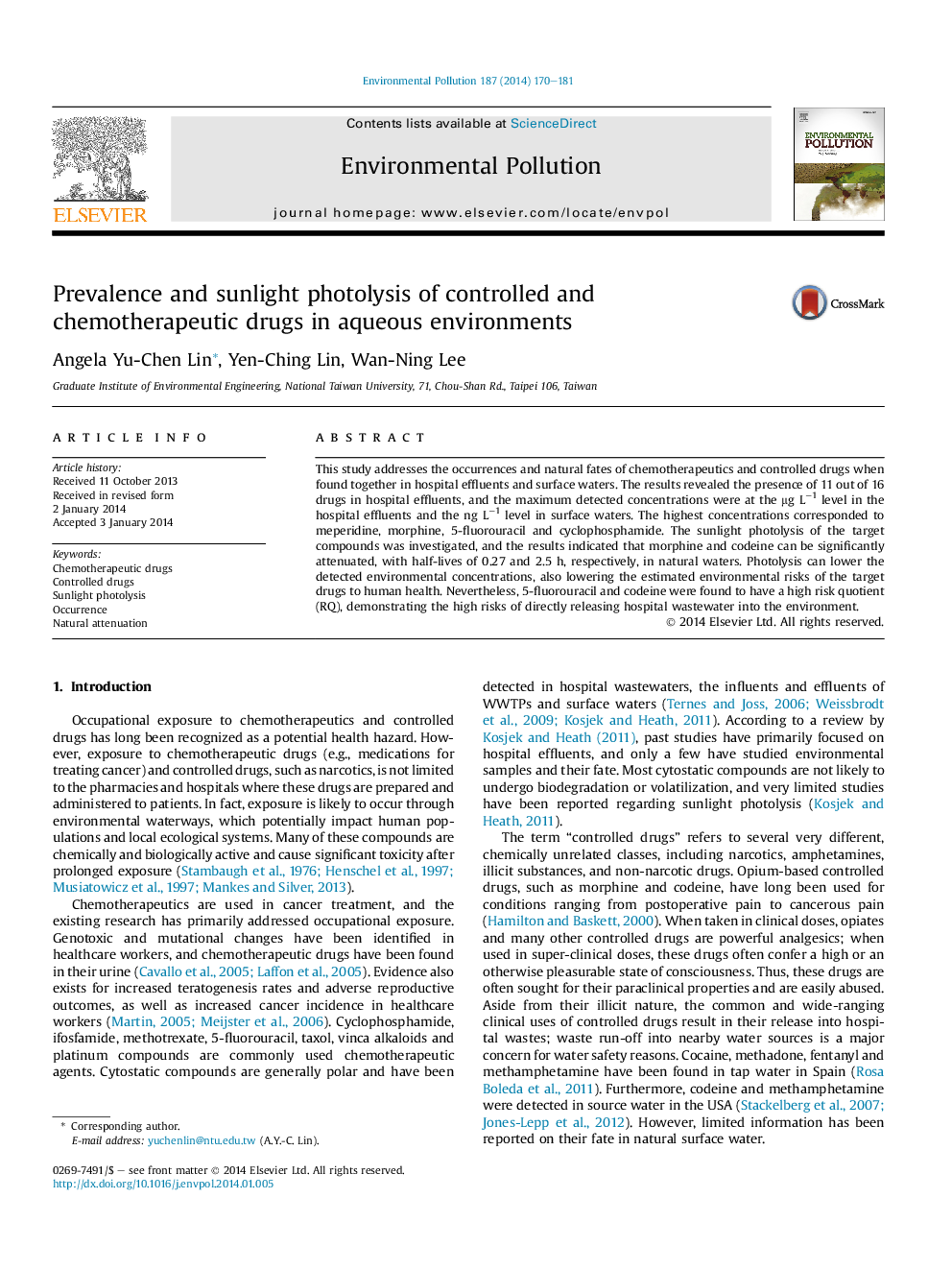| Article ID | Journal | Published Year | Pages | File Type |
|---|---|---|---|---|
| 6318322 | Environmental Pollution | 2014 | 12 Pages |
Abstract
This study addresses the occurrences and natural fates of chemotherapeutics and controlled drugs when found together in hospital effluents and surface waters. The results revealed the presence of 11 out of 16 drugs in hospital effluents, and the maximum detected concentrations were at the μg Lâ1 level in the hospital effluents and the ng Lâ1 level in surface waters. The highest concentrations corresponded to meperidine, morphine, 5-fluorouracil and cyclophosphamide. The sunlight photolysis of the target compounds was investigated, and the results indicated that morphine and codeine can be significantly attenuated, with half-lives of 0.27 and 2.5 h, respectively, in natural waters. Photolysis can lower the detected environmental concentrations, also lowering the estimated environmental risks of the target drugs to human health. Nevertheless, 5-fluorouracil and codeine were found to have a high risk quotient (RQ), demonstrating the high risks of directly releasing hospital wastewater into the environment.
Related Topics
Life Sciences
Environmental Science
Environmental Chemistry
Authors
Angela Yu-Chen Lin, Yen-Ching Lin, Wan-Ning Lee,
